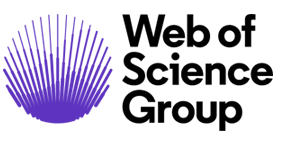Publisher
Salehan Institute of Higher Education
Society Collaborations
Indexing & Abstracting
 |
 |
Civil Engineering Journal (C.E.J) is an international, multidisciplinary, open-access journal committed to publishing high-quality, peer-reviewed research in all domains of civil engineering. Established in 2015 and published monthly by Salehan Institute of Higher Education, the journal serves as a prominent platform for the dissemination of innovative scientific findings, methodologies, and technological developments that contribute to the advancement of civil engineering as a discipline and profession. All submissions undergo a rigorous double-blind peer-review process to ensure the integrity, quality, and relevance of the published work.
Publishing Schedule
CEJ has been publishing twelve issues per year (monthly) since 2015. The exact schedule of publication for each issue is as the following:
| Issue | Month | Issue | Month | Issue | Month | Issue | Month |
|---|---|---|---|---|---|---|---|
| 1 | January | 2 | February | 3 | March | 4 | April |
| 5 | May | 6 | June | 7 | July | 8 | August |
| 9 | September | 10 | October | 11 | November | 12 | December |
The primary aim of Civil Engineering Journal (C.E.J) is to foster the global exchange of knowledge, ideas, and practical insights among civil engineering researchers, educators, practitioners, and policymakers. The journal seeks to bridge the gap between academic research and real-world engineering practices by publishing contributions that have significant scientific value and practical relevance. C.E.J aspires to be a leading venue for pioneering research, interdisciplinary studies, and innovative engineering solutions that shape the future of infrastructure, sustainability, and the built environment.
Civil Engineering Journal (C.E.J) covers a comprehensive range of topics within the civil engineering discipline and actively encourages interdisciplinary research that intersects with civil engineering applications. The scope of the journal includes, but is not limited to, the following areas:
The journal welcomes original research articles, review papers, technical notes, and case studies that significantly advance the state of knowledge and practice in civil engineering. Interdisciplinary and cross-sectoral research contributions are particularly encouraged, aiming to address complex engineering challenges in innovative ways.
|
Publication Start Year: |
2015 |
|
Acceptance Rate: |
27% |
|
Review Speed (Average): |
81 days |
|
Issue Per Year: |
12 |
|
Number of Volumes: |
11 |
|
Number of Issues: |
119 |
|
Number of Articles: |
1816 |
|
Number of Reviewers: |
3624 |
|
Number of Contributors: |
6178 |
|
Contributing Countries: |
91 |
|
Google h-index: |
56 |
|
Google i10-index: |
804 |
|
Abstract Views: |
11,481,612 |
|
PDF Download: |
5,908,793 |
Last updated: July 02, 2025




 a Creative Commons Attribution 4.0 International License. Site using Noble OJS 3 Theme
a Creative Commons Attribution 4.0 International License. Site using Noble OJS 3 Theme